Help users manage their finances
With just a few API calls you can get all the data you need to help your users with their finances.
In this article, we'll take you through a high-level overview of the data points you can extract from banking data and how it translates to finance management.

General Flow
By leveraging the data retrieved from the accounts, incomes, and transactions endpoints, you'll then be able to analyze your client's current financial status. In the diagram below, you can see the general flow of the calls you'll need to make, and the information you will receive, to get the information you need.
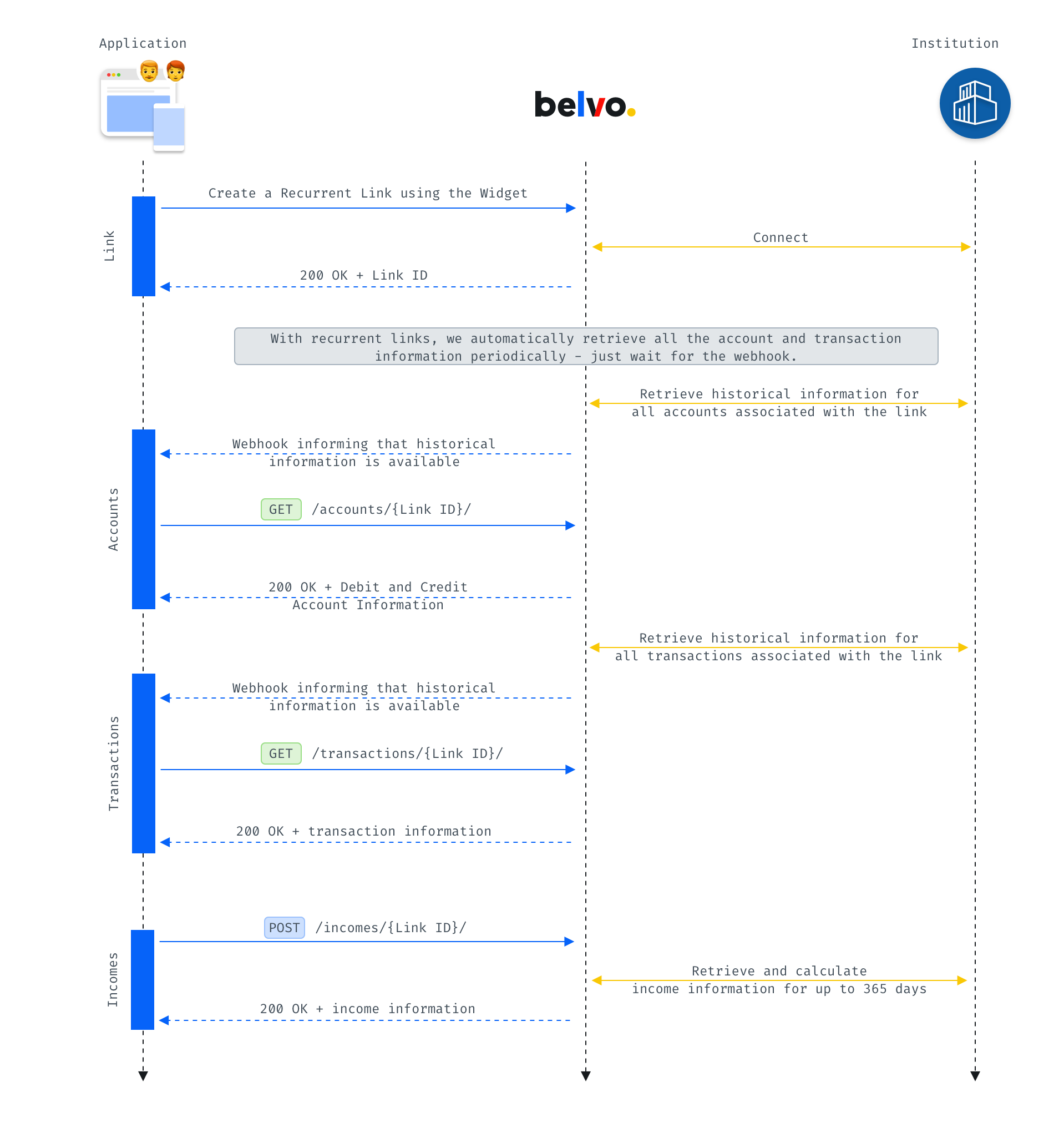
Recurrent Links
For PFMs, we highly recommend using recurrent links with an update frequency of six hours. This way, you'll be automatically notified whenever new transactions or account information is available, allowing you to make a simple, and quick, request to Belvo for the updated information.
Accounts: provide a high-level overview
Why use Accounts?
By looking at the accounts, you can quickly calculate the general financial situation of your clients, this includes their:
- Current cash balance
- Current credit card debt
- The balance of any loans they have
- Pension fund contributions (Brazil only)
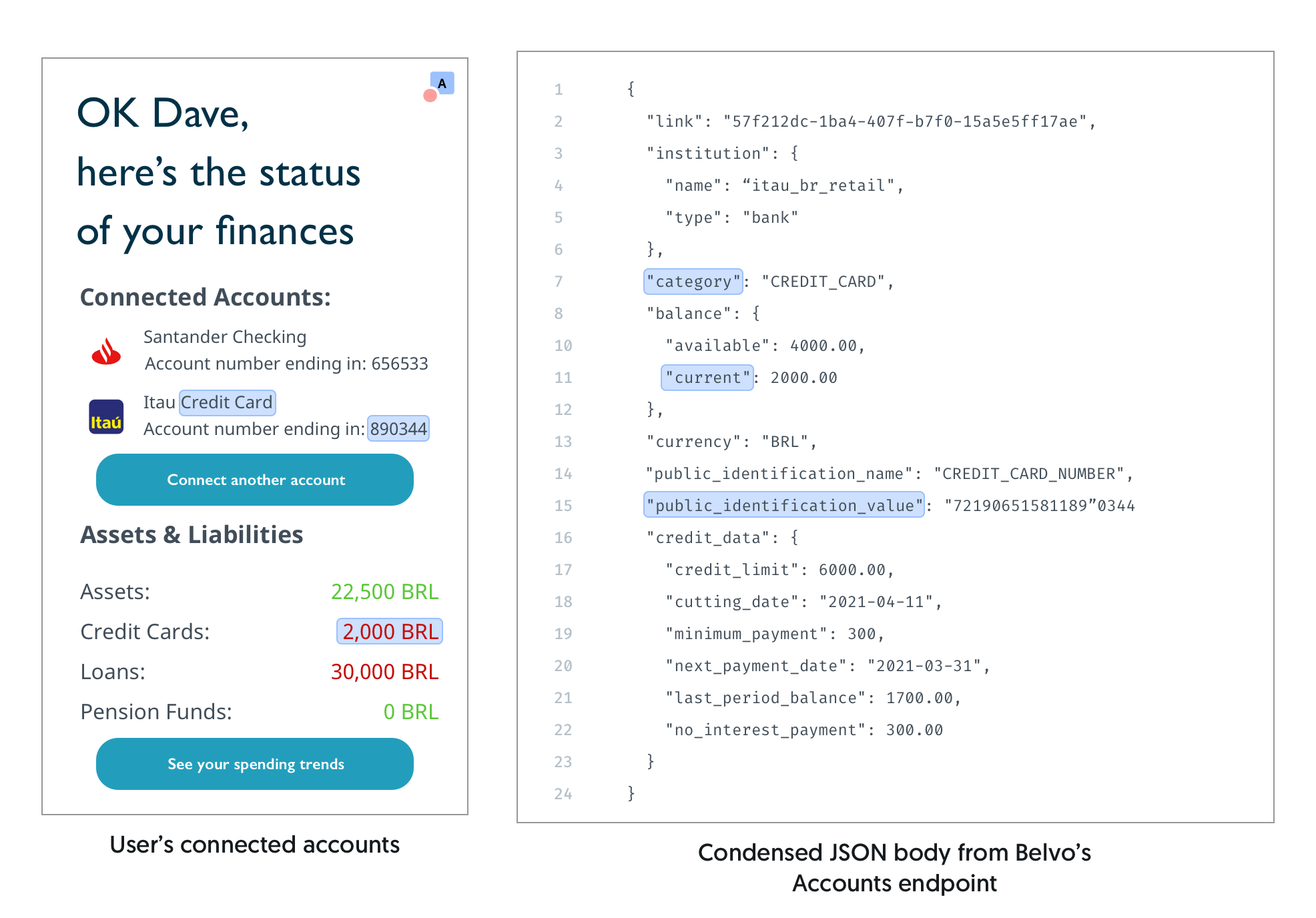
Incomes
Why look at the incomes?
By looking at your clients incomes, you can confirm:
- The type of income your client receives
Find out if they are a salaried employee or retired with a pension. If you see that they often receive cash deposits as a type of income, this could indicate that they receive their salary in cash from their employer. - The amount they receive
- The frequency that they receive it
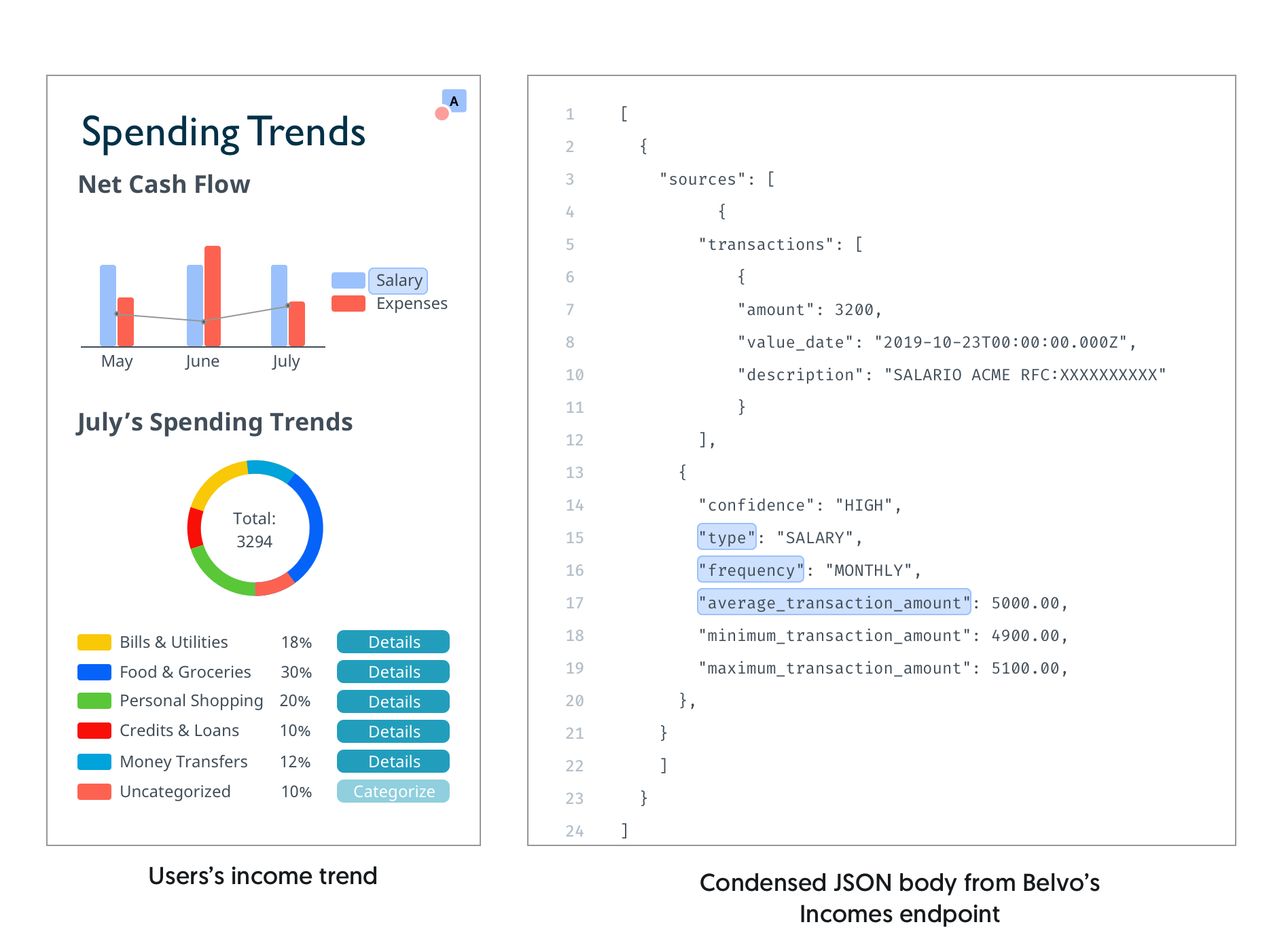
Using this data, along with an analysis of their outflow transactions, you can create a Net Cash Flow chart to visualize past spending habits, as well as estimate their future financial situation:
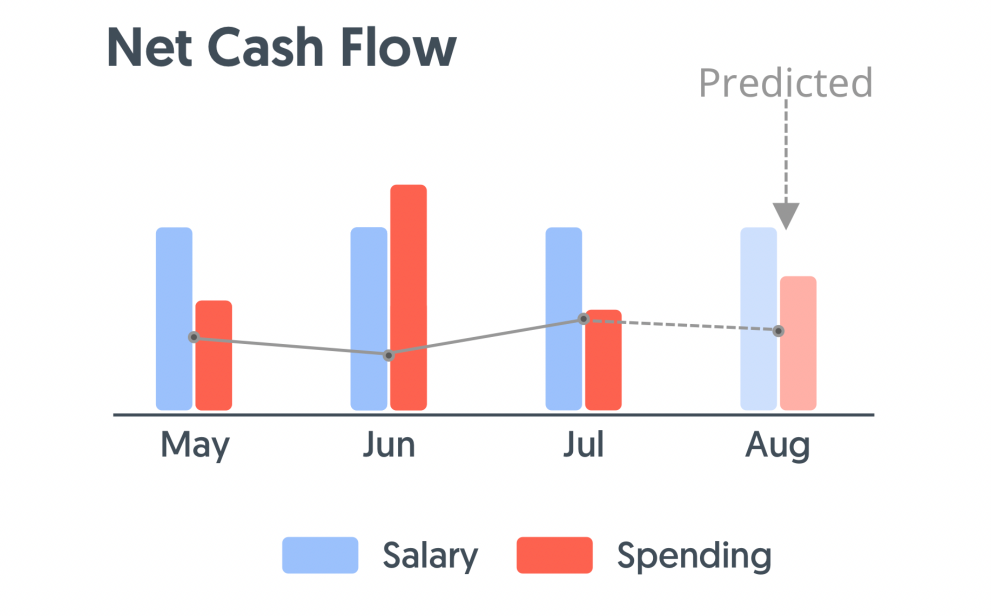
Transactions: see where they're spending their money
Why use transactions?
By looking at the transactions your customer has made in the last 90 days, you can get a great idea of their spending habits over a given period of time.
For each transaction, you can see the:
- category of the transaction (Bills & Utilities, Food & Groceries, and more)[link]
- type (inflow or outflow)
- amount
- description of the transaction
- when the transaction occurred

With all this information, you can create simple visualizations to highlight the user's spending trends, grouped by month and category.
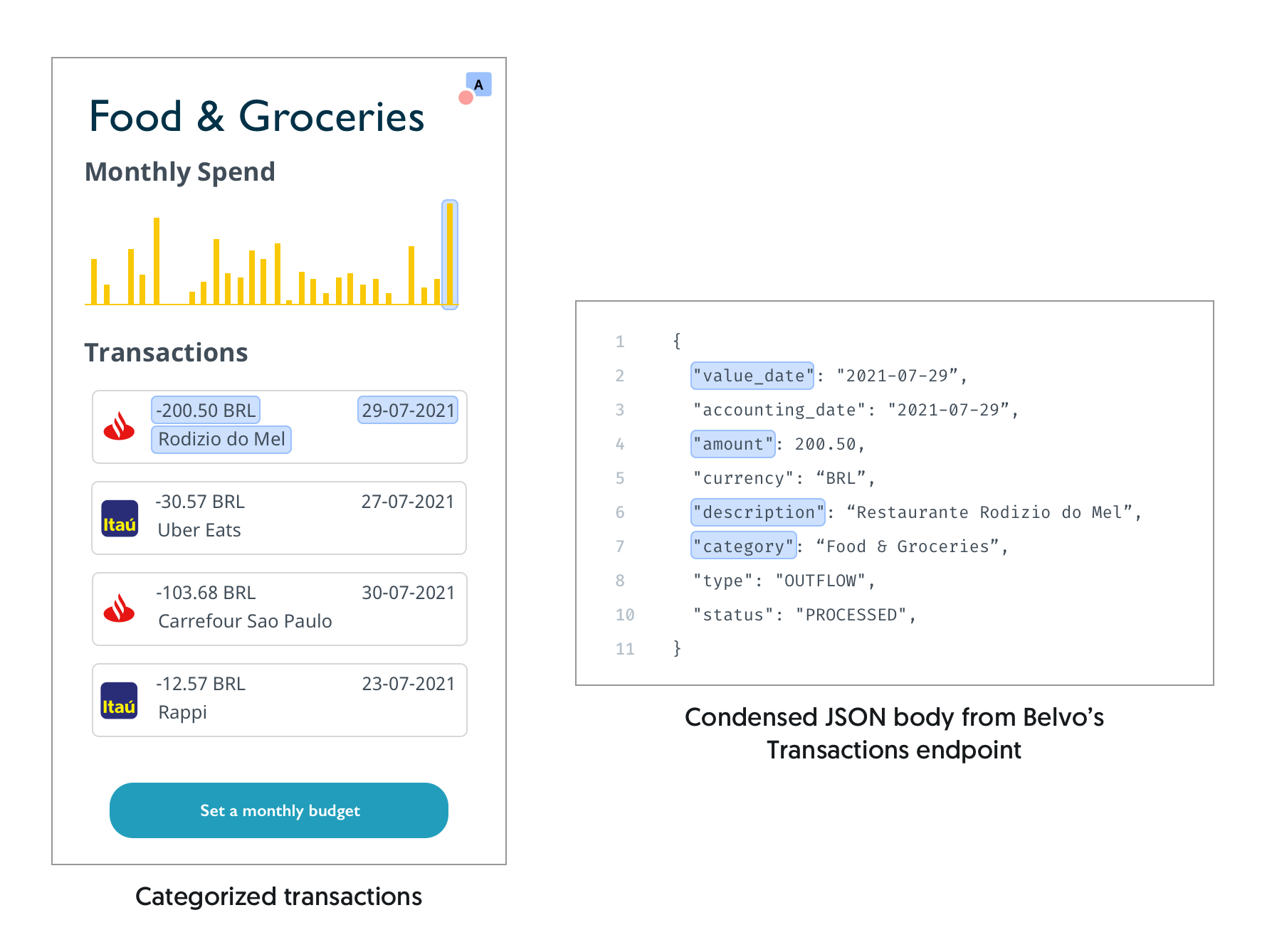
Done! What next?
You can build on the raw data you retrieve from Belvo to:
- Predict the cashflow
- Map when recurring payments occur
- Let your users create budgets per category
- Allow your users to add custom categories to their transactions
- Provide some advice on where your users could optimize their spending
Related Guides
Banking API
Follow these high-level flows using Belvo's Banking product to:
Verify your user's personal and banking information
Use banking data to verify your user's identification and banking information.
Assess the lending risk of your retail client
See how to combine multiple endpoints and extract the right information to perform a risk analysis of a client.
Fiscal API
Use our Fiscal product to quickly:
Verify your user using fiscal information
Use Mexico's SAT to verify your users fiscal information.
Updated 7 months ago